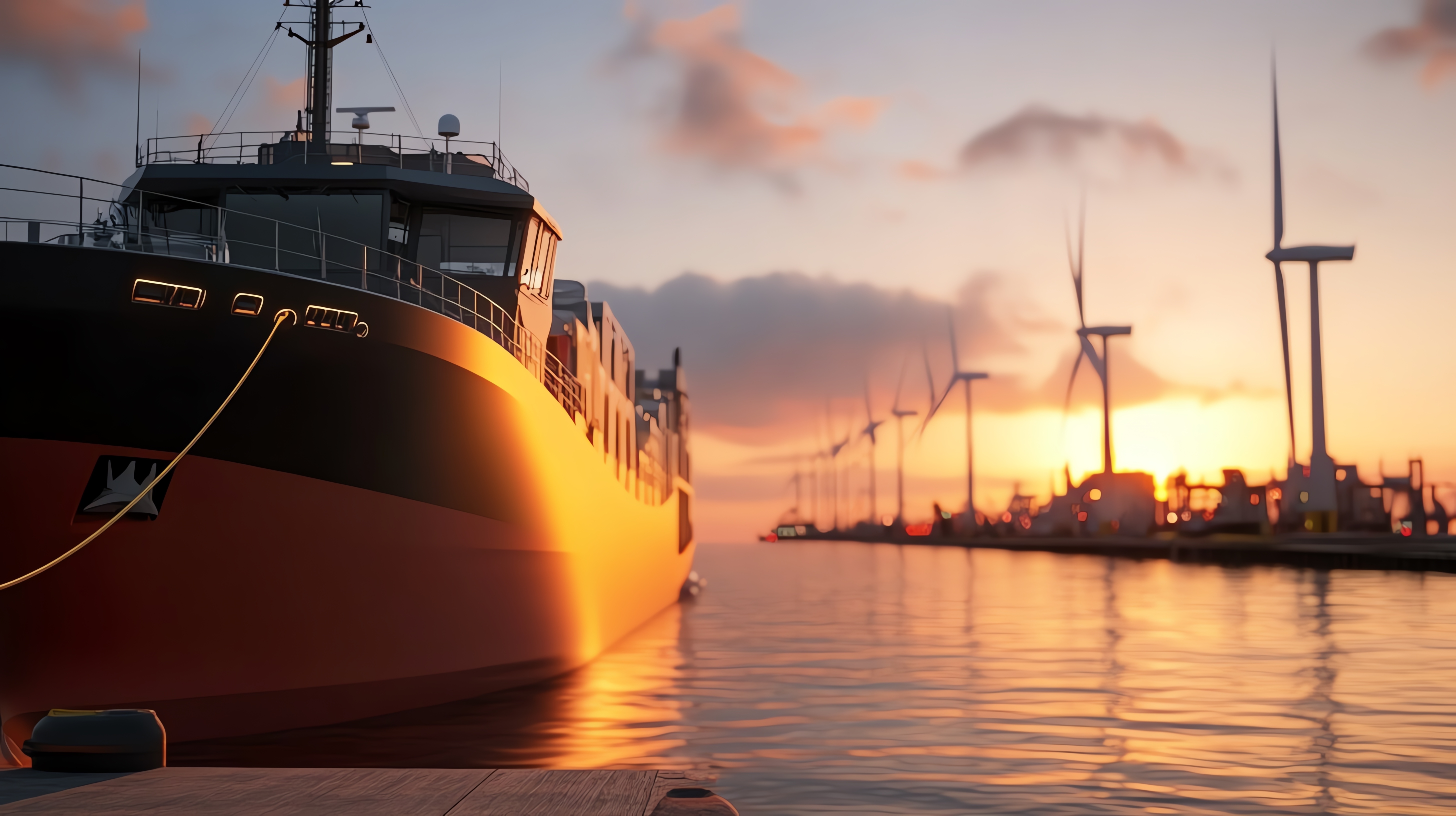Malaysia is a relatively young country, gaining independence from the British in 1957. In 1963 West Malaya merged with Sabah and Sarawak and the country was named Malaysia.
Due to the complexities of the Malaysia Agreement in 1963, there is no single overriding Merchant Shipping Act to govern the entire country. In this regard, Peninsular Malaya (West) has its own Merchant Shipping Ordnance 1952 whilst Sabah and Sarawak which make up Malaysian Borneo have their Merchant Shipping Ordinances respectively.
It is often remarked that Malaysia is one nation but with two limitation regimes.
A shipowner can limit its liability either through the vessel's tonnage as provided by statute adopting the relevant limitation convention or in cases where a bill of lading is issued adopting either the Hague or Hague Visby Rules limits, the shipowner can also rely on limitation per package or unit or the weight of the cargo. The shipowner will often plead both as defence and avail himself of the limitation which provides him with the lowest compensation payout.
A brief comparison of the two Regimes in Malaysia on limitations is discussed below.
I. Tonnage Limitation
LLMC 1957 or LLMC 1976?
Two different vessel limitation regimes are applicable in Malaysia:
- The International Convention Relating to the Limitation of Liability of Owners of Sea-going Ships, 1957 (the 1957 Convention) applies in Malaysian Borneo (comprising the states of Sabah and Sarawak)
- The Convention on Limitation of Liability for Maritime Claims 1976 amended by the 1996 Protocol (the LLMC 1996) applies in Peninsular Malaysia (comprising the states of Peninsular Malaysia and the Federal Territory of Labuan).
In Malaysian Borneo, the 1957 Convention is given domestic effect through subsidiary legislation made under the Merchant Shipping Ordinance No.2 of 1960 (MSO No.2 1960) in Sarawak and under Merchant Shipping Ordinance No.11 of 1960 (MSO No.11 1960) in Sabah.
In Peninsular Malaysia, the LLMC 1996, to which Malaysia is a state party, is given force through section 360 of the Merchant Shipping Ordinance 1952 (MSO 1952).
Tonnage Limitation in Peninsular Malaysia
The LLMC 1996 is set out in the 16th Schedule of the MSO 1952 (enacted through the Merchant Shipping Amendment and Extension Act 2011). To date, there are no legislative amendments to adopt the new limits under the amended version of the LLMC 1996, which came into force into 2015.
Under the LLMC 1996, insurers of liability for claims, shipowners, salvors and any person whose act, neglect or default the shipowner or salvor is responsible for are entitled to limit their liability.
A shipowner includes a charterer, manager and operator of a ship. The claims which are subject to the limitation of liability include:
- claims in respect of loss of life or personal injury or loss or damage to property, occurring on board, or in direct connection with the operation of a ship, and consequential losses arising; and
- claims in respect of loss caused by delay in the carriage of cargo or passengers.
Liability is limited based on the gross tonnage of the ship and the value of special drawing rights (SDR) (Articles 6, 7, and 8, Part 1, of the Schedule).
The limits of liability in respect of claims for loss of life or personal injury are 2 million SDRs for a ship not exceeding 2000 tons; for a ship more than this tonnage, there in addition (a) 800 SDRs, for each ton from 2,001 to 30,000 tons (b) 600 SDRs, for each ton from 30,001 to 70,000 tons, and (c) 400 SDRs, for each ton over 70,000 tons.
The limits of liability for any other claims for a ship with a tonnage not exceeding 2000 tons are 1 million SDRs; for a ship over this tonnage, in addition, the following amount (a) 400 SDRs, for each ton from 2,001 to 30,000 (b) 300 units SDRs, for each ton from 30,001 to 70,000 and (c) 200 SDRs, for each ton over 70,000 tons.
Tonnage Limitation in Sabah and Sarawak
Sabah and Sarawak continue to apply the 1957 Convention in their respective merchant shipping legislation. This is done to maintain the no-fault defence under the 1957 Convention, i.e. that the vessel owner must establish that the incident causing the loss and damage occurred without his actual fault or privity.
Under the 1957 Convention, the shipowner bears the burden of proof to show the absence of actual fault or privity in the relevant occurrence. This is an onerous burden as it requires the shipowner to prove that the occurrence is an inevitable one (see Sarawak Shell Bhd v The Owners or other persons interested in the Ship or Vessel The "Red Gold" and another action [2011] 1 MLJ 239). The high burden of proof may well preclude a shipowner from limiting his liability, and accordingly, the shipowner would potentially be liable for unlimited compensation.
This is because the phrase "actual fault or privity" infers something blameworthy in the owner himself, as opposed to his servants or agents. Where the shipowner is a company, the fault or privity must be that of the company's 'alter ego' or that of the persons who are the 'active and directing will' of the company.
Accordingly, under Article 3(1) of the 1957 Convention, the limitation fund for property claims is set at 1,000 Gold Francs per tonne whereas for personal claims the fund is set at 3,100 Gold Francs per tonne.
By contrast, under the LLMC 1996, it is the claimant who bears the burden to prove that the loss resulted from the shipowner's personal act or omission, committed with the intent to cause such loss, or recklessly and with the knowledge that such loss would probably result. Arguably, it is very difficult for the claimant to discharge the burden as it involves an element of intent. Consequently, the liability limits under the LLMC 1996 are "virtually unbreakable" in practice.
II. Limitation of Liability under Sea Carriage Documents
Hague Rules or Hague Visby Rules?
Sabah and Sarawak - Limited Provisions for Documents of Carriage
The Hague Rules in use in Sabah and Sarawak are only applicable to "contracts of carriage covered by a bill of lading or any other similar document of title". This meant, in general, that the Hague Rules' protection was accessible only when a bill of lading was issued.
Where parties issue delivery orders, consignment notes, sea waybills, and other papers used in the performance of domestic and foreign commerce, the protection was not accessible.
The rationale applied is that the Hague Rules do not mention waybills or other non-negotiable documents so they are not "any other similar documents of title".
Also, in Sabah and Sarawak, the bill of lading is prima facie proof of receipt by the carrier of the goods listed in the bill as per Article III (4) of the Hague Rules.
Peninsular Malaysia - Additional Sea Carriage Documents and Electronic Forms now protected
Unlike simpler times, modern shipping practice now requires a myriad of sea carriage documents. This includes, but is not exhaustive to - Bills of lading (whether negotiable or not), consignment notes, sea waybills and ship's delivery orders. This increase reflects the current demands of international commerce, where a slew of papers (apart from the bill of lading) are required to facilitate trade.
In Peninsular Malaysia (going beyond the Hague-Visby Rules), all these documents, even their electronic forms, are now protected under Article I (aa), (b) and (ba) of the First Schedule to the Carriage of Goods By Sea Act 1950, as amended by the Carriage of Goods By Sea (Amendment of First Schedule) Order 2021 (the Amended COGSA).
These protections extending to electronic forms of documents are consistent with current international developments such as UNCITRAL's Model Law on Electronic Transferable Records (drafted in 2017), which aims to modernise commerce.
Further, under Article III (4) of the First Schedule to the Amended COGSA, the Bill of Lading remains prima facie proof of receipt by the carrier of the goods listed in the Bill of Lading. However, proof to the contrary shall not be admissible in the case of a negotiable sea carriage document that has been transferred to a third party acting in good faith.
One Year Time Bar
Sabah and Sarawak - Strict Compliance with the one-year time bar rule
Article III (6) of the Hague Rules reaffirms the conventional view that claims against the carrier and the ship are time-barred unless filed within one year of the goods' delivery. This is one of the most noticeable characteristics of the Hague Rules. It is said that the rationale for this restriction is that carriers cannot be expected to preserve records for lengthy periods and must know quickly what claims they may be liable for.
Peninsular Malaysia - Extensions allowed by agreement and for Indemnity Claims
The one-year time restriction for cargo claims can now be extended by agreement of the parties once the cause of action has arisen, as per Article III (6) of the First Schedule to the Amended COGSA. These revisions have the effect of allowing parties to control the speed of their litigation (if any) and providing extra time for a recourse action that would otherwise be time-barred.
Further, Article III (6bis), extends the time limit for indemnification actions by a carrier to the restrictions provided by the domestic law, subject to a minimum of three months after the party filing the indemnity claims settles or is served with the procedure.
Limitation of Liability
Sabah and Sarawak - The Gold Value
Under the Hague Rules applied in Sabah and Sarawak, the carrier's liability is limited to £100 per package or unit.
According to Article IX, this signifies gold value.
In the Rosa S [1988] 2 Lloyd's Rep 574, it was held that the '£100' must be modified to a gold value of £100 in 1924, which makes sense give the inflation factor. This adjustment meant that for the parties in The Rosa S, the value of £100 was equivalent to SGD9,398 in 1982.
However, both Sabah and Sarawak do not apply the ratio in the Rosa S.
Instead, the value of '£100' is statutorily defined in Sarawak as 'RM850' as per Regulation 7 of the Merchant Shipping (Implementation of Conventions Relating to Carriage of Goods by Sea and Liability of Shipowners and Others) Regulations 1960.
This statutory definition is incorporated mutatis mutandis in Sabah under Regulation 3 of the (Sabah) Merchant Shipping (Applied Subsidiary Legislation) Regulations 1961.
The 'RM850' limitation would apply to any vessel carrying goods from any port in Sarawak/Sabah to any other port whether within or outside Sarawak/Sabah.
Peninsular Malaysia - Clarity as to the limitable value
Article IV (5) of the First Schedule to the Amended COGSA has resolved the problem of the Gold Value, by providing the liability limit at SDR 666.67 per package or unit or SDR 2 per kilogram of the gross weight of the goods lost or damaged, whichever is higher. Thus, in Peninsular Malaysia, there is no need to provide for any separate fluctuation factor in this scheme, as it is embedded in the SDR. The SDR is a stable international reserve asset created by the International Monetary Fund (IMF) and is valued according to the basket of the world's five major currencies i.e. Chinese Renminbi, US Dollar, Euro, British Pound and Japanese Yen.
In that vein, the confusion as to the 'gold value' provision in Article IX of the Hague Rules has been removed.
Conclusion
Given the significantly different limitation regimes governing Peninsular Malaysia and Sabah and Sarawak, shipowners should be aware that these two regimes function independently in terms of where the incident has occurred and which Court the limitation suit (or arrest suit) is brought in. It is recommended that the early legal advice be sought to best guide shipowners on their best options depending on the nature and circumstances of the incident.
The UK P&I Club would like to thank Jeremy M Joseph and Matthew Van Huizen of JOSEPH & PARTNERS, for their very interesting article above.




